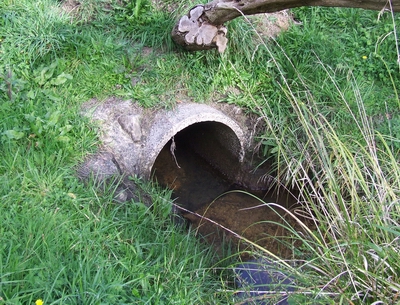Fish-friendly culverts and rock ramps in small streams

The survival of many of our freshwater fish species depends on their ability to migrate between rivers and the sea, or to move upstream to spawn.
Poorly designed or installed culverts that restrict fish passage can cause a decline in freshwater fish numbers.
You can help ensure a successful journey for our freshwater fish by following these simple guidelines for building culverts and rock ramps in small streams.
Culverts are placed in rivers and streams to enable people and stock to cross safely and easily. Fish can't get up culverts unless they are built and installed properly.
Rock ramps are a simple solution for fish passage over low obstacles such as culvert outlets.

Why do fish need passage?
New Zealand's freshwater fish are part of our natural freshwater ecosystems. They are a traditional food source and an important part of our recreational and commercial fishery.
Northland has 22 native freshwater fish species, and 14 of these need to migrate between freshwater and the sea as a necessary part of their lifecycle. For example, whitebait – which are the youngsters of five of our native fish species – move upstream to live as adults.
Other freshwater fish, such as the introduced trout, must also be able to travel upstream to spawn.
These fish must pass through culverts on their journeys – if their passage is restricted, it can seriously impact on fish populations in our rivers and streams.
As well as providing for fish passage, a well-designed culvert will reduce the risk of flooding and erosion both upstream and downstream.
 A well-designed culvert allows for fish to move through as part of their lifecycle.
A well-designed culvert allows for fish to move through as part of their lifecycle.
Installing a new culvert
If you're planning to install a new culvert in a stream, you may not need a resource consent from Northland Regional Council, but there are certain standards required, such as:
- The culvert must be no longer than 25m and large enough to not cause flooding or erosion on other properties; and
- It should not hinder fish passage, which can usually be provided for quite easily.
If you are unsure whether you need a resource consent, contact our consents team on 0800 002 004.
What about existing culverts?
Many existing culverts were designed without fish passage in mind and others are no longer fish-friendly because they have deteriorated over time. Problems with small culverts can often be fixed with simple alterations.
These guidelines can help you fix existing culverts as well as build new ones.
Maintenance
Culverts need to be regularly checked and maintained to make sure they work properly. You need to watch out for – and act on – any scouring of the stream bed and banks, blockages, structural damage and stream bed movement.
What about existing floodgates?
If you have a floodgate, you would help fish passage by allowing a small continuous flow of water to go through the gate, by using flotation devices (e.g. ballcocks) or hinges that stop the gates closing completely.
